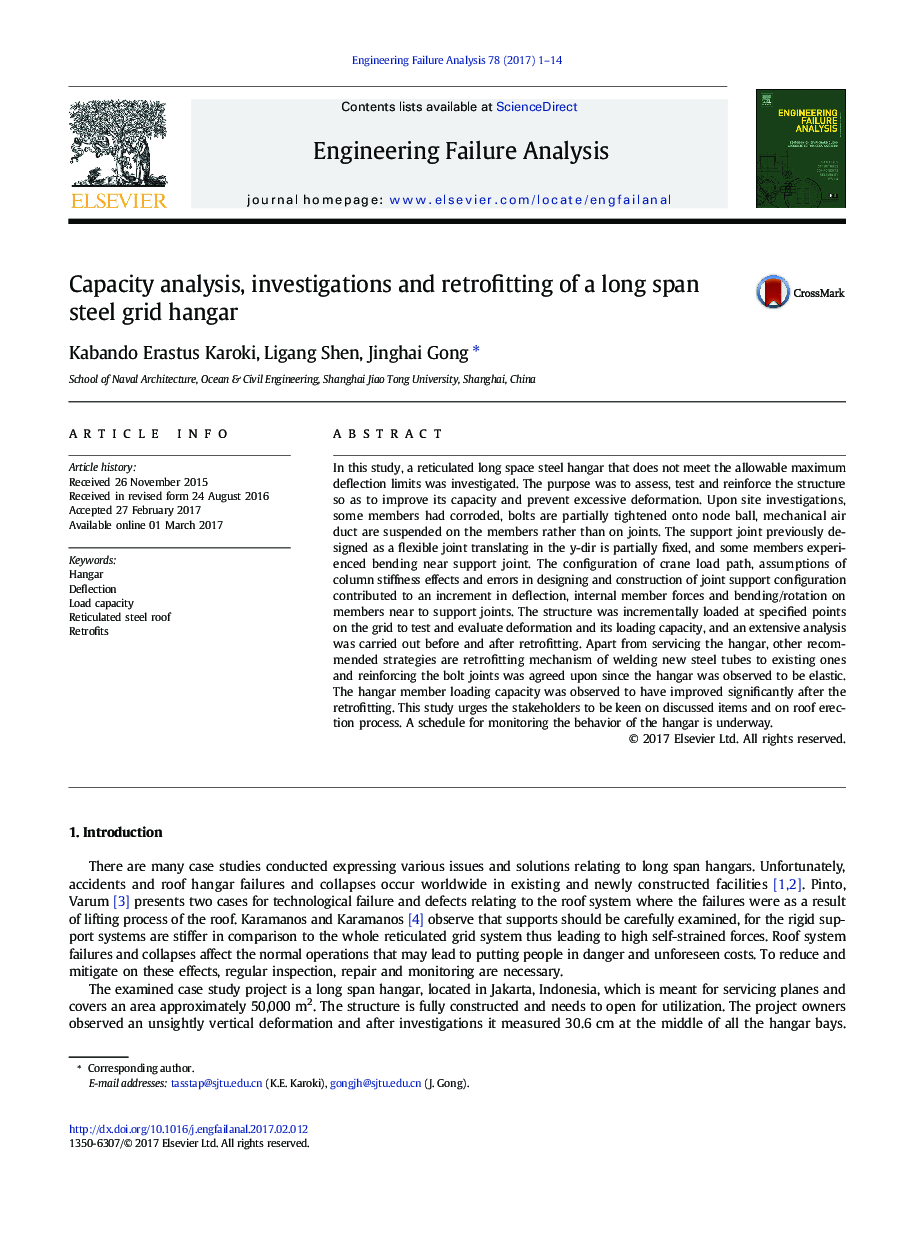| Article ID | Journal | Published Year | Pages | File Type |
|---|---|---|---|---|
| 5013618 | Engineering Failure Analysis | 2017 | 14 Pages |
Abstract
In this study, a reticulated long space steel hangar that does not meet the allowable maximum deflection limits was investigated. The purpose was to assess, test and reinforce the structure so as to improve its capacity and prevent excessive deformation. Upon site investigations, some members had corroded, bolts are partially tightened onto node ball, mechanical air duct are suspended on the members rather than on joints. The support joint previously designed as a flexible joint translating in the y-dir is partially fixed, and some members experienced bending near support joint. The configuration of crane load path, assumptions of column stiffness effects and errors in designing and construction of joint support configuration contributed to an increment in deflection, internal member forces and bending/rotation on members near to support joints. The structure was incrementally loaded at specified points on the grid to test and evaluate deformation and its loading capacity, and an extensive analysis was carried out before and after retrofitting. Apart from servicing the hangar, other recommended strategies are retrofitting mechanism of welding new steel tubes to existing ones and reinforcing the bolt joints was agreed upon since the hangar was observed to be elastic. The hangar member loading capacity was observed to have improved significantly after the retrofitting. This study urges the stakeholders to be keen on discussed items and on roof erection process. A schedule for monitoring the behavior of the hangar is underway.
Keywords
Related Topics
Physical Sciences and Engineering
Engineering
Industrial and Manufacturing Engineering
Authors
Kabando Erastus Karoki, Ligang Shen, Jinghai Gong,
